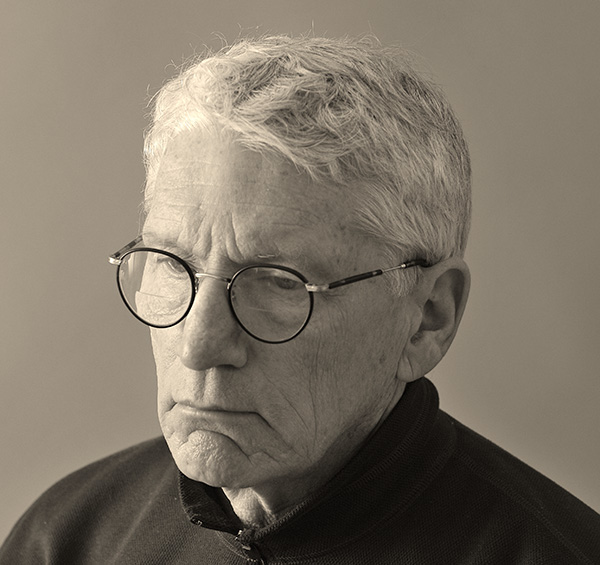Gregory Spaid (born, 1946) is an American artist who works in many modes and styles of photography, which are linked by a common thread of illuminating the commonplace. Whether it is the daily movement of pedestrians on the streets of New York City or the leaves that fall in his yard in rural Ohio, it is photography’s potential to transform our common experiences to reveal meaning and beauty that is the hallmark of his work.
Spaid’s recent work includes a photography project that explores the importance trees play in our lives and for the health of the planet titled
Reading Trees. His work on trees includes Cliché Verre photographs that incorporate actual leaves and other materials on negatives he makes by hand. For this project he traveled throughout the United States and has been awarded artist residencies at the Brush Creek Foundation in Wyoming, Mesa Verde National Park in Colorado, Congaree National Park in South Carolina and the Sonoran Arts Residency in Ajo, Arizona. During the Covid-19 pandemic, he focused on the natural world much closer to home, within footsteps of where he lives, to produce a series of videos to share with friends, titled
The Machine in the Garden, that take a close look at nature for the beauty and inspiration still to be found there.
Since 2009, Spaid has photographed the dance-like movement of people on the street of New York City for a series of abstract images titled
Pedestrians. His photography on the changing landscape of rural America was included in a major group exhibition at
The J. Paul Getty Museum in Los Angeles titled
Where We Live. As well as the Getty Museum, his work is in other major collections including the
Museum of Modern Art, the International Museum of Photography at the
George Eastman House, and the
Smithsonian American Art Museum. He received a Fulbright Research Fellowship to Italy and is the recipient of eight grants from the Ohio Art Council. Spaid has published two monographs:
Grace: Photograph of Rural America and
On Nantucket. In 2010, the Getty Museum published his work in an historical survey titled
The Tree in Photography. Spaid taught studio art at Kenyon College where he served for nine years in academic administration including six years as the college’s provost.
About Leaf Cutting Series
"Leaves occur in such abundance where I live in rural Ohio as to seem worthless, and yet each one is astoundingly complex and beautiful both in its form and function. I think of the leaves in this series as visual representations of wildness, while the alterations I make to them -- the cutting -- is a form of rational human intervention.
These images from my leaf cutting series are camera-less photographs made from negatives I make by hand -- a process known by the French term Cliché Verre. Cliché Verre is one of the earliest uses of light-sensitive, photographic materials. In the mid-19th century, it was used by a few French landscape painters, including Corot, Delacroix, Millet and Rousseau, to reproduce drawings they made on glass plates.
My process is a hybrid one and an experimental contemporary version of that early process. After making a negative by hand, I scan it, process it digitally, and then print it as an archival ink jet print. Because there is no right or wrong way to make Cliché Verre images, I invent my technique as I work and let chance and discovery shape my approach. The subject of this work is leaves that I collect, make translucent, cut in unique shapes, and then combine with other materials (including maple syrup, blueberry juice, glue, India ink) to make hand-made 'negatives.'” --
Gregory Spaid
